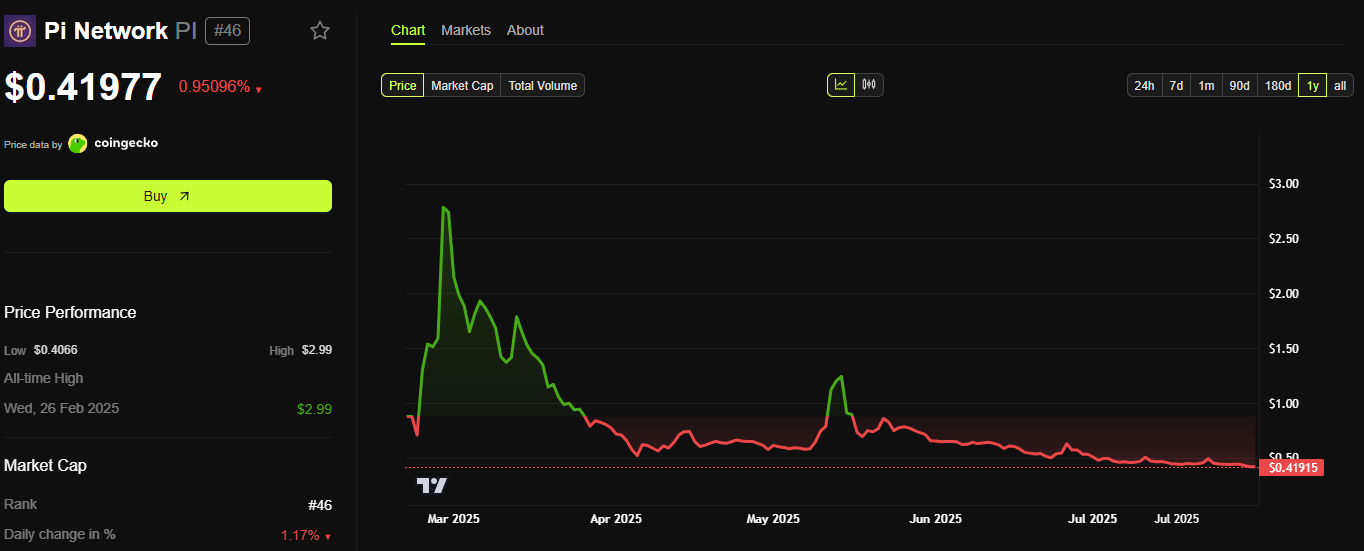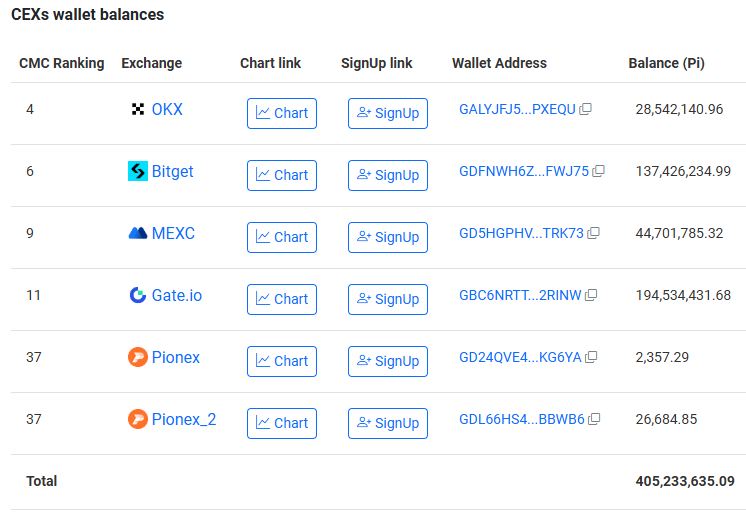Chain data from the PI network in July appears to contradict the expectations of pioneers. Pioneers hoped that recent updates from the PI core team would drive demand, but reality instead shows an increase in sales pressure.
The clearest evidence lies in the increase in the amount of PIs transferred to centralized exchanges during July.
In July, CEXS held PIs with over 400 million pi
Earlier this month, Beincrypto reported that the exchange’s PI volume had hit a record high of 370 million. By the end of July, that figure had surpassed PI 405 million, according to Piscan data.
This number could increase even more as 161.6 million PIs are unlocked and entered the circulation.
If demand and trading volumes also increase, a large exchange balance is not surprising. However, CoinmarketCap data shows that Pi’s 24-hour trading volume was below $100 million for most of July. In contrast, daily volumes of PI in May ranged from $500 million to over $2 billion.
As a result, PI prices face consistent downward pressure throughout the month. Beincrypto data shows that they have just closed their daily candles at that lowest level since their PI listed at $0.419.

The project unveiled several notable updates last month. These include the “Buy Pi” feature (you can use Fiat to purchase PI), Pi App Studio, and launching the Ecosystem Directory Staking. However, these efforts were not sufficient to cause a price recovery.
Analysts identify two major issues facing PI networks
Recently, renowned PI advocate Kim H Wong highlighted two major issues that hinder the growth of the PI network.
First, he pointed out that PI networks have very few distributed applications (DAPPs) that support the actual exchange of supplies and services. This severely limits the practical use of Pi Coin.
Secondly, most users’ PI coins are locked when transferred to their wallet. This reduces flexibility and usefulness, and negatively affects the overall growth of your network.
“The solution is to open available apps as quickly as possible and implement a second PI migration as soon as possible. Without solving these two issues, PI networks will struggle to flourish,” he added.
Ray Youssef, CEO of NOONES and former Paxful co-founder, reflected this view. He believes that developers who create real user utilities will drive the long-term value of PIs. However, he said he realized that the PI only attracted users and didn’t provide meaningful utilities.
“Pi has been a successful retailer. We mined one million tokens. But developer? That stable is thin,” Youssef told Beincrypto.
Ecosystem utilities are key to the long-term value of PIs. Without that, even the Binance List could be a massive sale disaster.
Postalists break down the core issues of PI networks. Andaps, no access, demand did not appear first.

